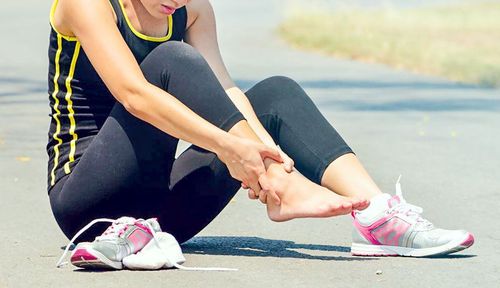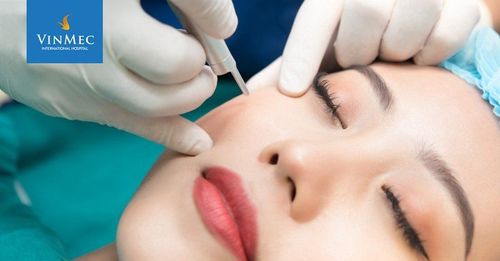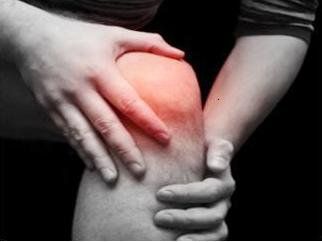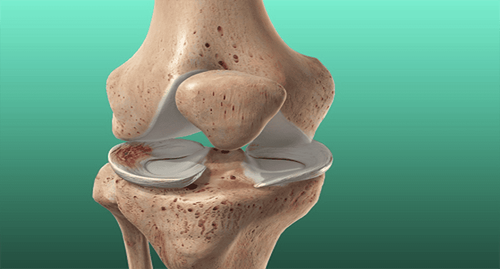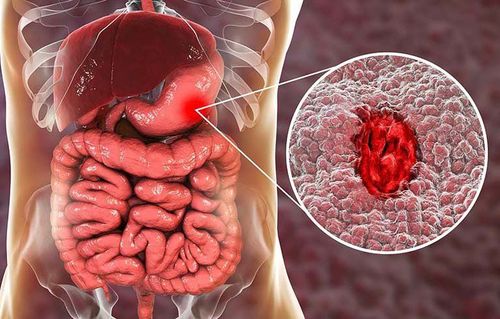This is an automatically translated article.
Sports are very good for health. However, improper exercise will cause injuries to the body, affecting health. This article will help you better see the common sports injuries and the most effective treatment methods.1. Common sports injuries
In sports, the most commonly affected areas of the body are the feet, ankles, knees, hips, elbows and shoulder blades. Injuries in these parts depend on the training regimen of each person, which will have different severity, but are dangerous for the practitioner if not treated promptly.Here are the most common injuries:
Muscle strains A muscle strain is an injury to a muscle or tendon (the tissue that attaches muscle to bone). When a muscle is strained, the muscle or tendon is stretched or torn.
This injury is most commonly found in the hamstrings, groin, quadriceps (front thigh muscles), calf muscles, back muscles, and shoulder muscles. The patient will feel pain, swelling and difficulty moving the muscle. In mild cases, the patient will feel better if the muscle is rested for a few days, but if the injury is severe, the pain will persist, making it difficult to move.
Sprain A sprain is an injury to a ligament (tissue that connects two or more bones at a joint). During a sprain, one or more ligaments are stretched or torn.
Sprains are a manifestation of common injuries when people are overworked and affect the joints. In particular, the ankle is a sensitive area and prone to sprains, which greatly affects health and activities in life.
Ankle sprains are the most common, usually occurring when the foot turns inward, tearing the ligaments on the outside of the ankle or overstretching it. Symptoms are easy to see pain swelling, purple, hematoma and when pressed on the ankle area will feel uncomfortable pain.
Shoulder Tendonitis The shoulder joint is the joint with the largest range of motion in the body, so it is very susceptible to injury. Shoulder injuries account for 1/10 of all sports injuries. Most injuries are caused by overload or repetitive throwing and pushing. Of all joints, shoulder rehabilitation after injury is the most difficult because the range of motion is too wide, many tendons and muscles are involved, and it takes a long time after injury to return to sports.
Rotator cuff tendinitis Rotator cuff tendonitis is most common in the shoulder area. The group of rotator cuff tendons in the shoulder consists of 4 muscle tendons that wrap around the shoulder joint, have the function of strengthening the shoulder, and help us make the movement of lifting the hand up, bringing the hand forward and back, and turning the shoulder.
This group of tendons is very thin but very important, responsible for almost all the activities of the shoulder joint. Therefore, if there is inflammation and swelling, it will cause pain, and reduce or lose movement of the shoulder, if not treated properly, it will become chronic and difficult to treat.
Symptoms come on slowly and often don't remember the exact cause.
Manifestation: Pain in the shoulder, which may radiate up the neck or down the front of the arm. Pain when performing the movement of hands above the head to serve the ball, whispering in badminton, tennis, volleyball, swimming..., or when performing the throwing movement in javelin, handball...
Progress : Without proper and timely treatment, shoulder pain will get worse, pain increases when moving, and pain even when sleeping. Later, there was a time when the pain was so severe that it was impossible to move the shoulder. When shoulder pain lasts for a long time, it will lead to complications of stiffness, muscle atrophy, loss of motor function, disturbance to life, whole body breakdown, chronic insomnia.
In the case that after 1 month of treatment with the above measures, there is no improvement, we will use modern means of treatment which is surgery or shoulder arthroscopy to remove inflammatory tissue by specialized means or using radio waves, is an advanced technique that burns away the inflamed tissue, helping the tendon to return to normal. After surgery, practice early recovery and return to sports after 4 months.
Inflammation of the long tendons of the two heads Manifestations: pain in the front of the shoulder, radiating down to the elbow.
Cause: Excessive, repetitive shoulder movement.
Sudden increase in intensity, frequency or duration of exercise or sport.
Common in badminton, tennis, boating, golf, swimming, gymnastics, handball, javelin...
Prevention: strengthen shoulder muscles, perform stretching exercises .
Knee Injuries There are three common types of knee injuries as follows:
Anterior cruciate ligament tear: Thanks to the anterior cruciate ligament, the knee joint is kept stable. But when you put your foot on the floor in the wrong position, stopping suddenly or changing direction too quickly can cause the anterior cruciate ligament to tear. Leads to pain, swelling, difficulty in movement, especially walking. Inner knee ligament tear: Located on the medial side of the knee, the inner knee ligament connects the femur and tibia. Injuries here often occur when the knee is pushed too far to the side when moving or when the knee is damaged. At that time, you will experience pain, swelling and instability of the knee joint. Patella-thigh syndrome: The cause of patella-thigh syndrome can be exercised such as playing basketball, volleyball, running. Repetitive impact of the patella--femur against the femur can damage the cartilage underneath. The most common symptom is pain, but you will only feel it after a while. Scleritis of the humerus The cause of this injury is overuse. When playing sports with repetitive movements such as tennis, golf, table tennis, badminton, practitioners can develop tendonitis in the forearm muscles that attach to the outside of the elbow. The usual manifestation is pain on the outside of the elbow, which will get better with rest. But if you continue to exercise, the injury will be more serious.
2. When to see a doctor and common treatments
When you have symptoms of pain as above, which do not get better after a few days, you should see a doctor for timely advice. Especially if you have the following symptoms, you should go to the doctor immediately:deformed joints or bones or unable to move normally You can't bear weight on the affected leg or it makes you feel heavier, making it difficult to walk The wound becomes swollen and discolored. Big swollen wound With each injury, there will be different treatment methods. Depending on the severity, it will go from massage, physical therapy to surgery. Surgery is usually applied to anterior cruciate ligament tear or inner knee ligament tear when the injury is too severe. However, the treatment with physical therapy often requires a long time, the impact from from. During that time, the patient still suffered from persistent pain. This is where the pain treatment method with platelet-rich plasma PRP comes into play its outstanding advantages in the treatment of trauma.
3. Injury treatment by injection of platelet-rich plasma PRP
The method of injecting platelet-rich plasma, also known as PRP injection, has been proven to be safe, with quick pain relief, and long-lasting effects.What is Platelet Rich Plasma? Platelet Rich Plasma (PRP) stands for Platelet Rich Plasma. This is a blood product with a platelet content 2-7 times higher than normal blood, contains growth factors, promotes regeneration of damaged tissues, makes cells healthier.. Musculoskeletal damage, PRP has anti-inflammatory effects, stops pain quickly, increases mobility for muscles and joints.
What are the advantages of PRP injection? Safe preparations: Due to the use of blood taken from the patient's body, it is completely safe. End pain quickly: As mentioned above, PRP has a high platelet content that contains many growth factors and biomolecules, helping to stimulate the body's natural healing ability, speeding up the healing process. local restoration of damaged tissue thereby reducing pain rapidly. Gentle treatment process, reasonable cost No serious side effects. Some cases have mild purple or slightly uncomfortable at the injection site, this sign will go away after a few hours. Thanks to the above advantages, PRP is being applied more and more widely.
In which cases is platelet-rich plasma injection indicated? Treatment with PRP injection is usually indicated in the following cases:
Cases of tendinitis and limited range of motion: more than 95% successful, patients relieve pain and return to normal range of motion. In case of pain, limitation of movement accompanied by tendon tear: Minor tear (visible only on ultrasound or magnetic resonance): 80-90% of the tear recovers Completely torn: Most of the pain symptoms and ability have been improved. mobility. If there is no improvement after 2-3 injections, laparoscopic surgery should be considered. Cases of chronic damage with calcification in the tendon will be calcified before PRP injection: 80-90% of cases achieve high efficiency.
4. Platelet-rich plasma injection method in Vinmec
With a team of dedicated, experienced doctors and modern equipment, Vinmec hospital is a reliable address for the treatment of shoulder arthritis by PRP method.Precise procedure At Vinmec Times City International Hospital, after being examined, there is an indication for PRP injection, the patient will take blood and transfer PRP extraction. After 1 hour, this preparation is injected back to the patient, directly into the damaged area. After the injection, the patient can go home immediately and return to the clinic after 3-4 weeks to assess the effectiveness of the treatment. In fact, the extent of long-term cure and cessation of the disease will greatly depend on the quality of the PRP preparation after extraction and the correct injection into the lesion site. Therefore, the PRP preparation process at Vinmec is carried out with close supervision in a laboratory of international standards.
Modern equipment Vinmec's modern equipment has outstanding advantages to help the PRP method achieve maximum efficiency. Vinmec has used the most modern imaging equipment today to ensure the most accurate injection positioning. Those are GE Healthcare S9 ultrasound machines with flat transducers, high frequency, HD resolution for clear images, accurate lesion detection. The 3.0 Tesla Magnetic Resonator has specialized receivers for the joint area, so it can detect small lesions, at an early stage.
Team of experienced and highly qualified doctors Talking about PRP method, Dr. Tran Thi Tuyet Nhung - musculoskeletal specialist, Vinmec Times City Hospital who directly examines and prescribes PRP treatment for patients. More: “PRP injection is aimed directly at the lesion, so determining the right injection site is very important. Therefore, patients at Vinmec will receive ultrasound and magnetic resonance imaging to accurately diagnose the pathology and extent of tendon damage and tear (if any) in the Imaging Department. The process of injecting PRP again must be coordinated by the radiologist and musculoskeletal team under the guidance of ultrasound, to ensure the highest accuracy, no infection, then the "medicine" can bring short-term effects, while maintaining long-term effects."
At Vinmec, the whole process from examination and diagnosis to PRP injection is always performed and supervised by a team of experienced and highly qualified doctors. Since the beginning of 2017, Vinmec Times City has deployed PRP injection to treat arthritis under ultrasound guidance, bringing positive changes to hundreds of patients.
Injuries caused by sports, if not treated in time, will have unfortunate consequences for the practitioner.
Please dial HOTLINE for more information or register for an appointment HERE. Download MyVinmec app to make appointments faster and to manage your bookings easily.




